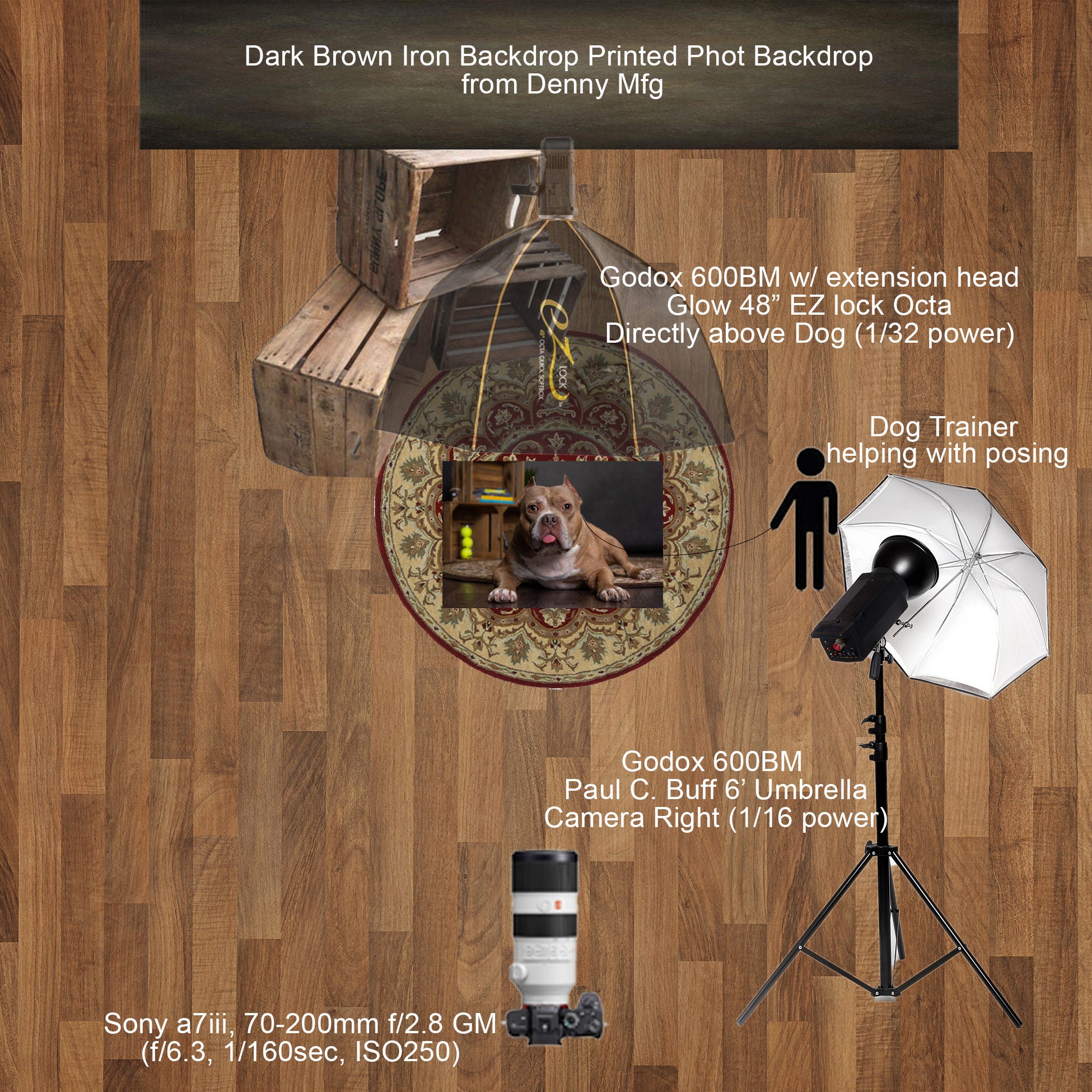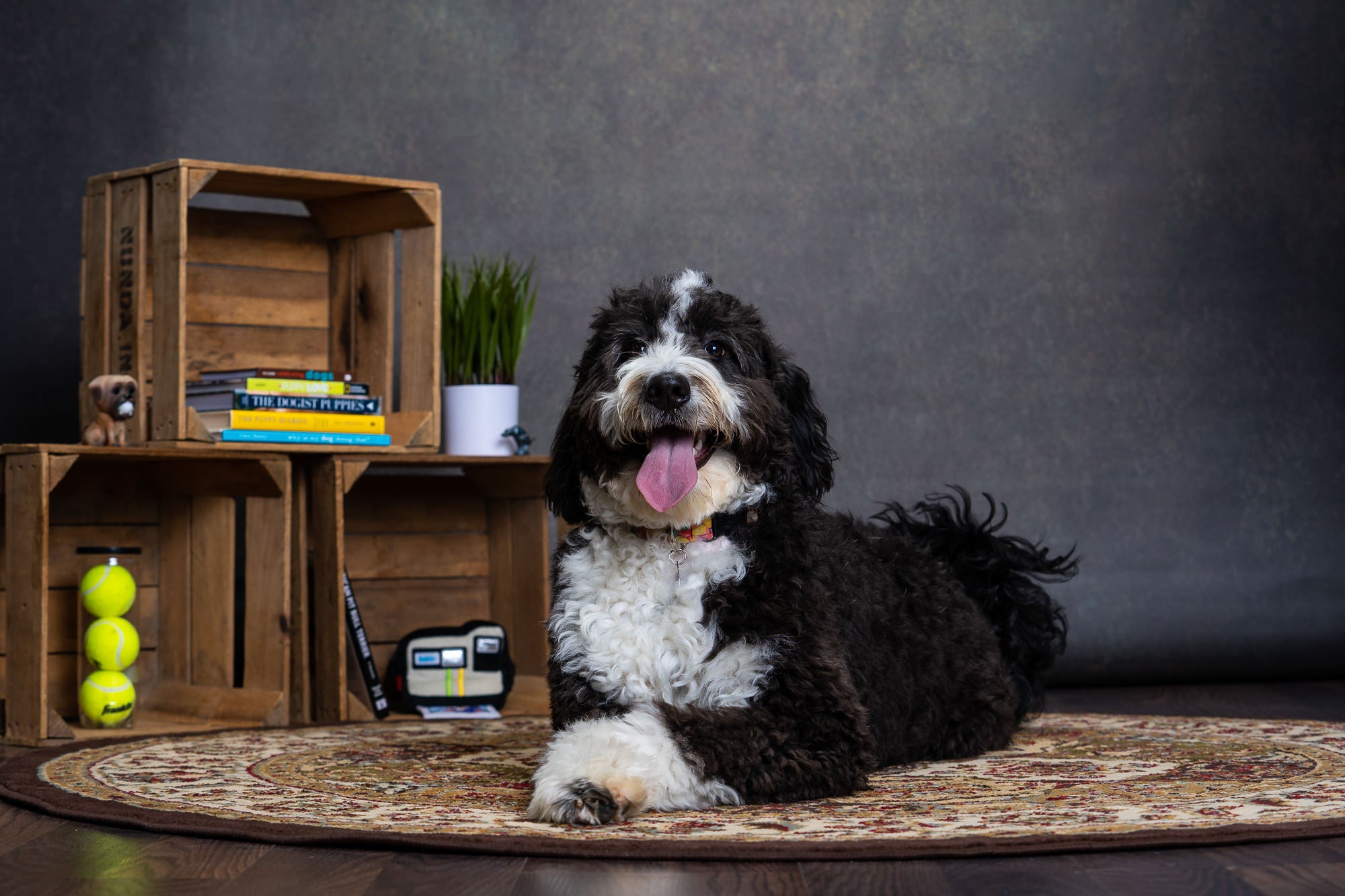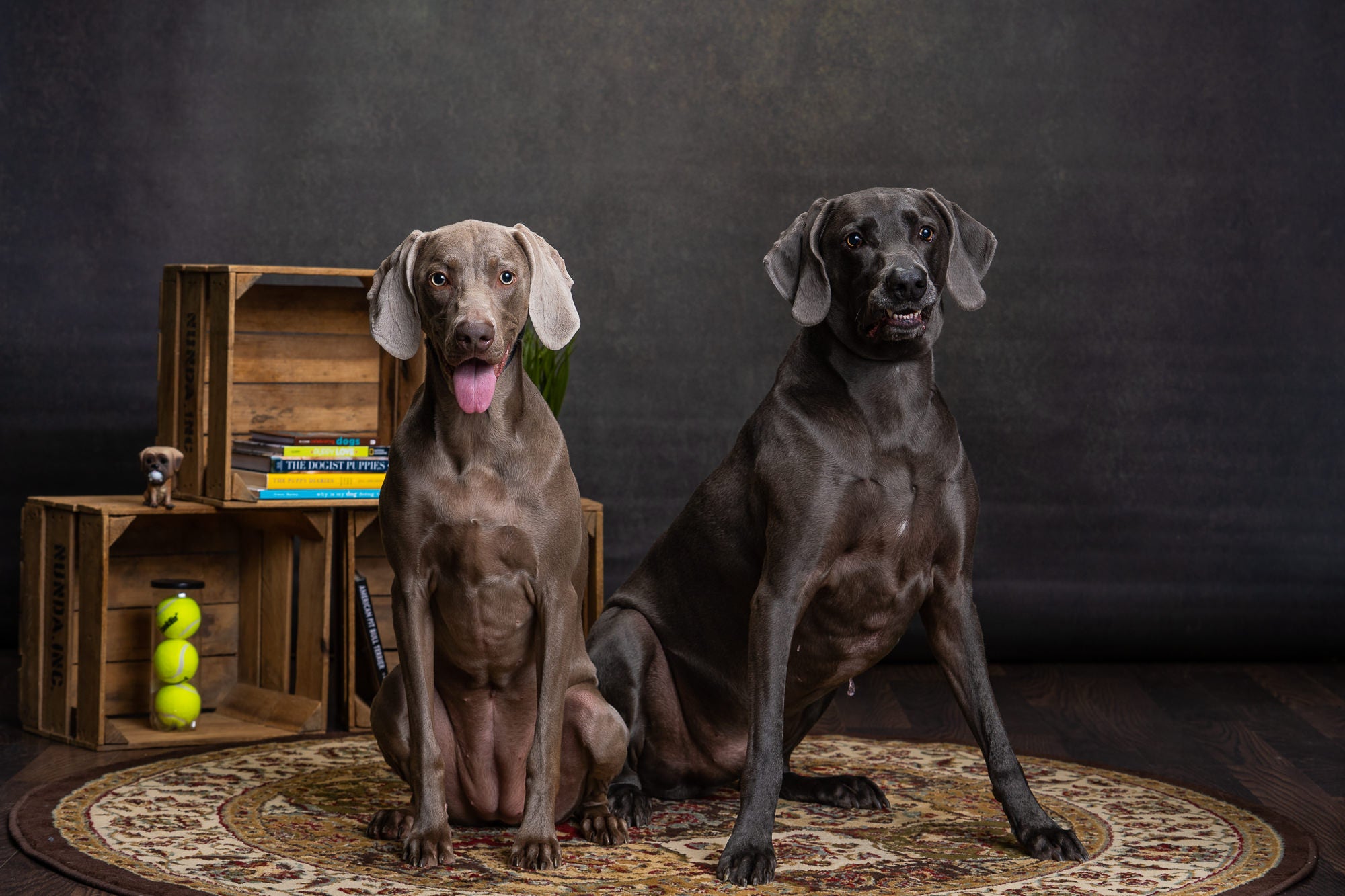We connect with Tim and Jen Orendorff of @orendorffstudios to learn more about their process for dog portrait mini sessions with the Sony Alpha 7 III and Sony 70-200mm f/2.8 G Master.
For the past five years, husband and wife photography team Tim and Jen Orendorff of @OrendorffStudios have hosted a pet portrait mini-session event called Bark In The Studio. “We collect a small session fee and ask for dog owners to bring a small 15 pound bag of dog food that we can donate to the local pet pantry in our area,” explains Tim. This year they collected more than ever, with over 3,800 pounds of dog food donated. We connected with them to learn more about their process for capturing successful holiday portraits of dogs in a short period of time and the Sony Alpha gear they use to do it.
Husband and wife photography team Tim and Jen Orendorff share their process for dog portrait mini sessions with the Sony Alpha 7 III and Sony 70-200mm f/2.8 G Master.
The Studio Setup & Gear
Their studio has a shooting area with the set for the dog portraits to take place. In the past they’ve used a Savage black seamless paper backdrop and this year they stepped up their scene with some more props, a rug and a dark brown iron printed photo backdrop from Dennymfg.com. To the right of the camera they have a Godox 600BM and Paul C. Buff 6” Umbrella at 1/16 power. Directly above the dog they have a Godox 600BM with an extension head and a 48” Glow EZ Lock Octa Softbox at 1/32 power. “I did a lot of research on if I should be using constant light or flash,” says Tim. “And we decided to go with flash and have never really had any issues.”
You can see the layout of the setup in the image below:

The Sony Alpha 7 III and Sony Alpha 7R III have been their go-tos, and the cameras’ Animal Eye Autofocus is very important for them when capturing dog portraits. “I’ve photographed some black labs who were completely black and it still picked up their eye,” explains Tim. He’s also found the camera’s speed comes in handy when photographing living things that you have little control over. “Some of the dogs can get a little rowdy. They’re basically like babies. You can control them to an extent, but not really. So the shutter speeds and stuff that the Alpha cameras offer is really helpful. It’s amazing how quickly I can grab focus and take 20 photos within a matter of seconds.”
Attached to their Alpha 7 camera for dog portrait mini sessions is the Sony 70-200mm f/2/8 G Master lens. “I sit back further so that the dog isn’t really paying attention to me, they’re paying attention to the trainer,” says Tim. “That way I can get full body shots when I'm anywhere between 70 and 100 millimeters. And then if I want to get that tight shot, I go the whole end at 200 and I'm still far enough away from him to where I'm not bugging him, but I can get that nice tight shot.
(Editor’s Note: You can learn even more about the gear they use in their What’s In My Bag article here.)

Photo by Tim Orendorff. Sony Alpha 7 III. Sony 70-200mm f/2.8 G Master. 1/200-sec., f/5, ISO 200
Limiting Distractions For Your Canine Subject
The Orendorffs have a trainer on site for the pet portraits to handle the dogs when they come onto the set. When owners enter the studio with their dog, they don’t go back into the shooting area. “It’s actually more of a distraction to have the owner there,” says Tim. “Sometimes a dog comes in and they’re bouncing off the walls. We have a trainer there who puts on a small slip lead and they transform into a different dog. We’ll come out with a dog after 10 minutes and their owners will wonder how we were able to get good photos that quickly. You just have to get them into the right headspace.”
He continues, “So the trainer keeps them cool and I’m back behind the camera. I have a squeaker and probably four different noises I can make with my mouth. It depends on the dog for what noise I have to use to get their attention. Sometimes it’s still too distracting in there and I can’t get a dog to listen at all. If they’re food motivated enough, that’s when the treats come into play.” After they get the shots and return the dog to their owner, the participants walk out with a swag bag of local human and dog goodies.
Processing The Images
Once they’ve wrapped photographing all of the dogs, Jen Orendorff steps into her studio manager role and takes the SD cards to upload everything to her computer. “Then I back it up and back it up again, because you always have to have backups,” she says. “So they’re uploaded on my computer and on our internal network so Tim can access the files immediately. Then we also upload them to a cloud-based network service for file storage that is RAW compatible so the full-size files could be downloaded from an online source.”

Photo by Tim Orendorff. Sony Alpha 7 III. Sony 70-200mm f/2.8 G Master. 1/160-sec., f/6.3, ISO 250
Next Tim pulls the images into Adobe Lightroom and sorts them by the dog’s first name, and each dog will have their own Lightroom folder. He goes through them all to make sure the scene looks OK and the dog trainer isn’t in the image or anything. “Then I always check for sharpness on the eye,” he explains. “So I will zoom in on every image and check to make sure each caught focus. There are times when I might keep it focused on the dog’s nose instead of the eyes, but for the most part I want those eyes sharp.”
The photos are then exported at a web resolution and uploaded into a Zenfolio gallery for the client to see. They have the client select their top five images in Zenfolio and get a notification when they’ve done so. These are the images that will be in Tim’s editing workload. “I load them into my Lightroom where I color correct and realign anything,” he says. “Then I’ll transfer them over into Photoshop to remove the slip lead or if the trainer’s hand is in the shot, I’ll get rid of that.” Then they upload the high-res version back to a final edited image gallery where the client can purchase either digital copies or prints.
The entire event not only produces some cute images, but also contributes to a great cause. The Orendorff’s look forward to it every year. “We’re dog people,” says Jen. “These people are coming to get portraits of their dogs, which puts them in a whole other category of dog owner, and I’m here for it. There are our people.”
See more of Tim and Jen Orendorff’s work at orendorffstudios.com and Instagram @orendorffstudios.



